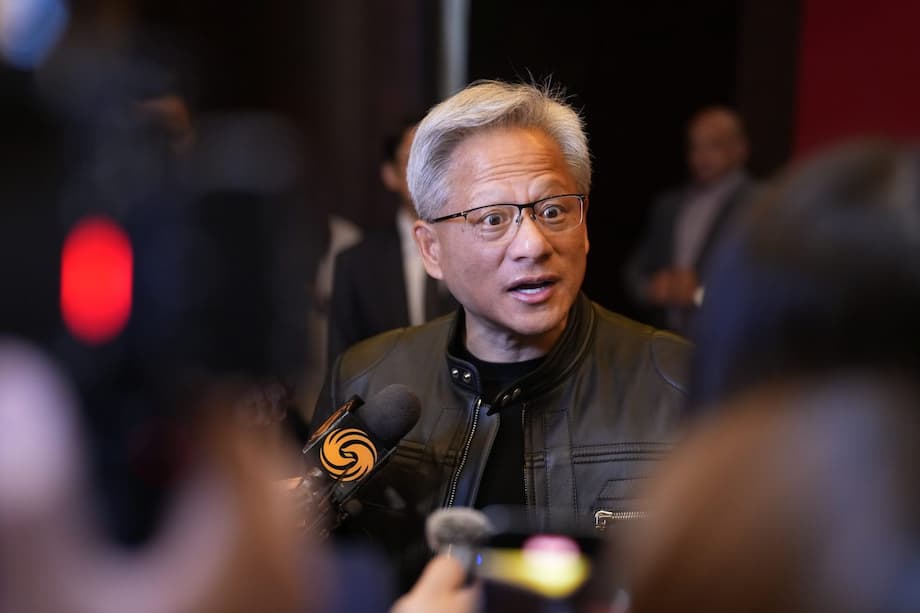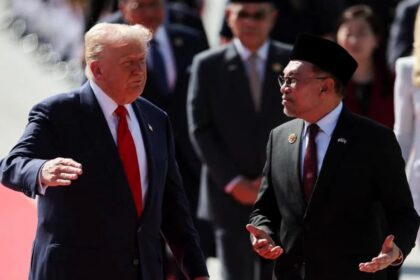China’s Chipmaker Cambricon Surges Amid Nvidia’s Export Ban: A New Era in the AI Hardware Race?
In a dramatic turn for the global semiconductor industry, Cambricon Technologies—a Beijing-based, partially state-owned chipmaker—has posted a staggering 4,300% revenue surge in the first half of the year, reaching 2.88 billion yuan (about $402.7 million). This explosive growth comes as Nvidia, the world’s leading AI chipmaker, reported zero sales of its H20 chips to China in the same period due to U.S. export restrictions. The result: Cambricon has become China’s most expensive stock, overtaking even the iconic liquor company Kweichow Moutai, and is now at the center of a fierce technological and geopolitical contest.
- China’s Chipmaker Cambricon Surges Amid Nvidia’s Export Ban: A New Era in the AI Hardware Race?
- Why Did Cambricon’s Revenue Skyrocket?
- How Did U.S. Export Controls Change the Game?
- How Does Cambricon Compare to Nvidia?
- What’s at Stake for Nvidia and the Global AI Market?
- Can Cambricon and China Catch Up to Nvidia?
- Broader Implications: The Global Chip War
- In Summary
Why Did Cambricon’s Revenue Skyrocket?
Cambricon’s meteoric rise is not just a story of financial numbers—it’s a reflection of China’s urgent push for technological self-sufficiency and the unintended consequences of U.S. trade policy. The U.S. government, aiming to slow China’s progress in artificial intelligence (AI) and advanced computing, imposed strict export controls on Nvidia’s most advanced chips, including the H20 model. For years, Nvidia has dominated the global market for AI accelerators—specialized chips essential for training and running large AI models. But with American chips suddenly out of reach, Chinese tech giants and startups have scrambled to find domestic alternatives.
Beijing has actively encouraged this shift. The government has cited national security concerns and the risk of supply chain disruptions as reasons to prioritize homegrown technology. As a result, demand for Chinese-made AI chips has soared, and Cambricon—founded by two brothers and backed by state capital—has stepped into the spotlight.
Cambricon’s net profit for the first half of the year hit a record 1.04 billion yuan, and its market capitalization has more than doubled in 2025, now valued at around $80 billion. The company’s stock has surged 125% in just one month and over 1,000% in two years, reflecting investor confidence in China’s domestic chip ambitions.
How Did U.S. Export Controls Change the Game?
The U.S. government’s export controls, first imposed under the Trump administration and continued by subsequent leaders, were intended to keep China from acquiring the most advanced AI hardware. The restrictions initially banned even Nvidia’s lower-performance H20 chips from being sold to China. Although the ban was later partially lifted, a new rule now requires Nvidia to share 15% of every dollar earned from H20 chip sales in China with the U.S. government—a de facto tax that complicates business and adds legal uncertainty.
Despite these hurdles, Chinese officials have reportedly warned local firms to avoid relying on U.S. parts whenever possible. This has led to a hybrid approach: companies are using whatever Nvidia chips they stockpiled before the ban, while rapidly adopting domestic alternatives like Cambricon’s products. The Chinese government has also told tech companies to stop using Nvidia’s H20 chips after U.S. officials said only less advanced versions would be available to China.
As a result, Cambricon and other local chipmakers have seen a surge in orders, with AI startups like DeepSeek releasing models optimized specifically for Chinese-made chips. This ecosystem effect is critical: while Nvidia’s hardware is still technically superior, its dominance has always depended on a robust software ecosystem that developers rely on. Cambricon is now investing heavily in both next-generation hardware and better software tools to close this gap.
How Does Cambricon Compare to Nvidia?
Despite Cambricon’s eye-popping growth, the company’s revenue is still a fraction of Nvidia’s. In the same period, Nvidia reported $46.7 billion in revenue—more than 100 times Cambricon’s haul. Nvidia’s global dominance is built on years of research, a vast developer community, and a lead in both hardware and software for AI applications.
However, the landscape is shifting. Chinese tech giants like Huawei and SMIC are catching up in terms of product quality and manufacturing capacity. Some analysts say that certain Chinese chips already outperform Nvidia’s H20 model, and the pace of innovation is accelerating as a direct result of U.S. restrictions.
Still, Cambricon and its peers face significant challenges. The most advanced chip manufacturing equipment—such as extreme ultraviolet (EUV) lithography machines—remains out of reach due to Western export controls. This means that while Chinese firms can design competitive chips, producing them at the cutting edge is much harder. As one industry analyst put it, Cambricon’s leap is “from tiny to small,” but the momentum is undeniable.
Investor and Market Reactions
Cambricon’s stock surge has attracted attention not just from Chinese investors but also from global hedge funds and technology analysts. Eric Jackson of EMJ Capital, for example, has noted Cambricon’s rapid growth and the strategic importance of its new product launches. The company’s market cap has jumped by over $40 billion this year alone, signaling strong confidence in its future prospects.
Meanwhile, Nvidia’s own stock remains a darling of the market, driven by its AI leadership and robust financials. But the company’s exposure to geopolitical risk is growing. U.S. export controls have already cost Nvidia billions in lost revenue and unsold inventory, and the company’s future in China—a market it once dominated—is now uncertain.
What’s at Stake for Nvidia and the Global AI Market?
For Nvidia, China represents a $50 billion opportunity in 2025 alone, with potential for 50% annual growth if access is secured. CEO Jensen Huang has repeatedly emphasized the importance of the Chinese market, arguing that U.S. and China are “complementary” in the global AI race. Even a partial recovery of lost sales could help Nvidia offset the impact of export bans.
But the risks are mounting. The 15% revenue-sharing agreement with the U.S. government adds a layer of financial and legal complexity. There is no formal U.S. regulation for this tax, leaving the arrangement in a gray area that could change with the political winds. If tensions escalate, Nvidia could be excluded from a $120 billion data center market in China, dealing a blow to its long-term growth narrative.
Nvidia is responding by developing new chips tailored for the Chinese market, such as the B30A—a version of its next-generation Blackwell architecture designed to comply with U.S. export rules. The company hopes that, with regulatory approval, it can resume H20 sales and introduce the Blackwell chip in China, potentially restoring its dominance in high-end AI infrastructure.
U.S. Policy: A Double-Edged Sword?
U.S. policymakers face a dilemma. On one hand, restricting advanced chip exports is seen as essential for national security, preventing China from using American technology to enhance its military or surveillance capabilities. On the other hand, these restrictions may be accelerating China’s drive for self-sufficiency and spurring innovation among domestic rivals.
Jensen Huang, Nvidia’s CEO, has argued, “Export controls only encourage Chinese rivals to innovate.”
Indeed, the rapid rise of Cambricon and the broader push for domestic alternatives suggest that the U.S. strategy may be having unintended consequences. As Ed Yardeni, a prominent macro analyst, notes, “China plans to triple AI chip production by next year, supported by policies to embed AI across economic and social sectors and strong backing for domestic firms like Cambricon.”
Can Cambricon and China Catch Up to Nvidia?
While Cambricon’s growth is impressive, the company and China’s broader chip sector still face significant hurdles. The lack of access to the most advanced manufacturing tools means that Chinese chips, while improving rapidly, are not yet on par with Nvidia’s latest offerings. Moreover, Nvidia’s dominance is not just about hardware—it’s about the entire ecosystem of software, developer tools, and global partnerships that make its chips the default choice for AI research and deployment.
However, the gap is narrowing. Chinese AI startups like DeepSeek are now releasing models optimized for local chips, and the government’s push for self-sufficiency is driving massive investment in both hardware and software. Cambricon is working on next-generation products and better developer tools, aiming to close the ecosystem gap that has long favored Nvidia.
For now, Cambricon’s leap is a sign of things to come. As one analyst put it, “The bigger story is China’s push for self-sufficiency.” If current trends continue, Chinese chipmakers could become global contenders in the AI hardware race within a few years.
Broader Implications: The Global Chip War
The battle between Nvidia and Cambricon is just one front in a much larger conflict over technology, trade, and national security. The semiconductor industry is the backbone of the digital economy, powering everything from smartphones to supercomputers. Control over advanced chip technology is seen as a key determinant of economic and military power in the 21st century.
For the U.S., maintaining a lead in AI hardware is a strategic priority. For China, achieving self-sufficiency in semiconductors is a matter of national survival. The result is a high-stakes race that is reshaping global supply chains, investment flows, and the very nature of technological innovation.
Investors and industry leaders are watching closely. The outcome will determine not just the fortunes of companies like Nvidia and Cambricon, but also the future of global AI development and the balance of power between the world’s two largest economies.
In Summary
- Cambricon Technologies posted a 4,300% revenue surge in the first half of the year, driven by China’s push for domestic AI chips amid U.S. export bans on Nvidia products.
- Nvidia reported zero H20 chip sales to China in Q2 2025, missing out on billions in potential revenue due to regulatory restrictions and a new 15% revenue-sharing rule with the U.S. government.
- China’s government is actively encouraging the adoption of local chips, citing national security and supply chain concerns, and has told tech firms to avoid Nvidia’s H20 chips.
- Cambricon’s technology is improving rapidly, but still lags behind Nvidia’s most advanced offerings due to limited access to cutting-edge manufacturing tools.
- The U.S.-China chip war is accelerating innovation on both sides, with major implications for the future of AI, global supply chains, and technological leadership.












